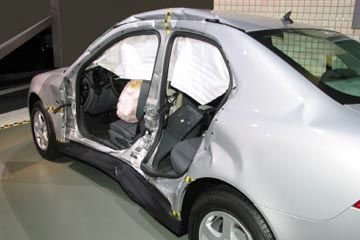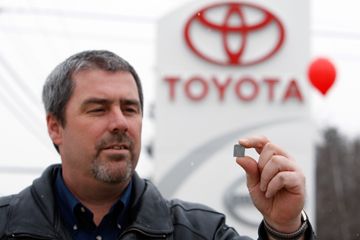Passive automotive safety has been around since the seat belt was implemented by Volvo in 1959. Most of the types of safety features we think of when we think of automotive safety fall under the umbrella of passive safety. Things like seat belts, airbags, side-curtain airbags and crumple zones are all part of the passive safety features in cars. But there are other types of passive safety systems, too, such as force disbursement, which spreads out energy from a crash to multiple areas of the vehicle, or safety cells, which protect occupants from car materials that may try to puncture the interior cabin during a collision. All passive systems are designed to protect occupants and even other drivers and pedestrians from injury, or at least help reduce injuries during a collision.
Chances are you've seen passive automotive safety testing in action. If you've ever watched film footage of a crash test dummy or a commercial showing airbags deploying then you've seen passive automotive safety testing. In order to evaluate passive safety systems, automotive manufacturers along with the government perform tests to evaluate how well the systems perform in crash scenarios. In the United States, the National Highway Traffic Safety Administration (NHTSA) conducts a series of tests on vehicles and ranks them based on a star rating system. Their testing includes car-to-car crashes, full-front-barrier tests, angled tests and variations of other barrier testing. The NHTSA tests provide consumers with an overview of how well the vehicle will protect its occupants during a collision, and it indirectly shows how well the passive safety systems hold up in an accident, too.
Advertisement
Car companies, like Honda, have their own testing facilities to gauge passive automotive safety. Honda's testing facility is an in-door all-weather building (the size of a major league baseball field) that allows it to test passive safety features in real world crash-test scenarios. Using crash-test dummies, vehicle sensors, speed sensors and film footage a car company can assess its passive safety systems by actually putting them to use in a controlled environment.
A report released by SupplierBusiness in 2009 concluded that the passive automotive safety field had reached a point of maturation, meaning that many passive safety innovations have already been implemented that make cars safer. This doesn't mean that there won't be expansion in the field, but rather that upcoming automotive safety endeavors may focus more on areas of active automotive safety, with the intent of preventing collisions instead of just reacting to them.
For more information about passive automotive safety and other related topics, follow the links on the next page.
Advertisement



